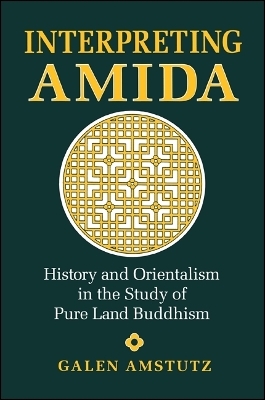
Interpreting Amida
History and Orientalism in the Study of Pure Land Buddhism
Seiten
1997
State University of New York Press (Verlag)
978-0-7914-3309-6 (ISBN)
State University of New York Press (Verlag)
978-0-7914-3309-6 (ISBN)
- Titel z.Zt. nicht lieferbar
- Versandkostenfrei
- Auch auf Rechnung
- Artikel merken
Examines the history of Japanese Pure Land Buddhism and how orientalist assumptions have caused the West to ignore this important tradition.
Pure Land Buddhism was the largest traditional religion in Japan. It had an enormous impact on Japanese culture and was among the first forms of Buddhism encountered by Western culture. Not only has it been neglected in modern descriptions of Japan, but it also has been relatively ignored by Buddhist studies. The author shows that Pure Land Buddhism, despite a Mahayana Buddhist philosophical basis, has paralleled the social and political qualities associated with the Judeo-Christian tradition. It has variously been threatening to mainstream Westerners, uninteresting to Westerners seeking the exotic, and disagreeable to cultural brokers on all sides who want to depict Japanese culture as radically opposed to the West. The faulty appreciation of Pure Land Buddhism is one of the leading world examples of a counterproductive orientalism that restricts rather than improves cross-cultural communication.
Pure Land Buddhism was the largest traditional religion in Japan. It had an enormous impact on Japanese culture and was among the first forms of Buddhism encountered by Western culture. Not only has it been neglected in modern descriptions of Japan, but it also has been relatively ignored by Buddhist studies. The author shows that Pure Land Buddhism, despite a Mahayana Buddhist philosophical basis, has paralleled the social and political qualities associated with the Judeo-Christian tradition. It has variously been threatening to mainstream Westerners, uninteresting to Westerners seeking the exotic, and disagreeable to cultural brokers on all sides who want to depict Japanese culture as radically opposed to the West. The faulty appreciation of Pure Land Buddhism is one of the leading world examples of a counterproductive orientalism that restricts rather than improves cross-cultural communication.
Galen Amstutz is Coordinator of the Edwin O. Reischauer Institute of Japanese Studies at Harvard University.
Preface: Shin Buddhism and Orientalist Interpretation
1. Background: Pure Land Buddhism from India to the Modern Period
2. Modernization
3. Interpreting Pure Land Buddhism before the Nineteenth Century
4. Interpreting Pure Land from the 1870s through World War II
5. Interpreting Pure Land in the Postwar Period
6. Interpreting Pure Land in the Future: A Concluding Prognosis
Appendix: Other Missionaries' and Outside Observers' Reports on Shin in the Late Nineteenth and Twentieth Centuries
Notes
Bibliography
Index
| Erscheint lt. Verlag | 25.4.1997 |
|---|---|
| Reihe/Serie | SUNY series in Buddhist Studies |
| Zusatzinfo | Total Illustrations: 0 |
| Verlagsort | Albany, NY |
| Sprache | englisch |
| Maße | 152 x 229 mm |
| Gewicht | 526 g |
| Themenwelt | Geisteswissenschaften ► Religion / Theologie ► Buddhismus |
| ISBN-10 | 0-7914-3309-9 / 0791433099 |
| ISBN-13 | 978-0-7914-3309-6 / 9780791433096 |
| Zustand | Neuware |
| Haben Sie eine Frage zum Produkt? |
Mehr entdecken
aus dem Bereich
aus dem Bereich
Philosophische Betrachtungen
Buch | Softcover (2024)
Aufbau TB (Verlag)
CHF 20,95
Unterweisungen in Zen-Meditation
Buch | Hardcover (2024)
Arkana (Verlag)
CHF 29,90


